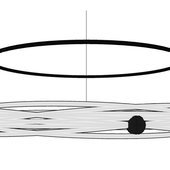Hello,
I'm a trainee for software development and in my free time I try to do various things. I decided I wanted to figure out how "Dual Contouring" works, but I haven't been successful yet. I could find some implementations in code which are very hard to follow along and same sheets of paper "explaining" it written in a way that I have a hard time even understanding what the input and output is. All I know that it is used to make a surface/mesh out of voxels. Is there any explanation someone can understand without having studied math/computer science? The problem is also that most of the words I can't even translate to German(like Hermite Data) nor I can find a explanation which I can understand. I know how Marching Cubes work but I just can't find anything to Dual Contouring also I don't quite get the sense of octrees. As far I'm aware of this is a set of data organized like a tree where each element points to 8 more elements. I don't get how that could be helpful in a infinite 3D world and why I shouldn't just use a List of coordinates with zeros and ones for dirt/air or something like that.
Thanks
A clueless trainee ^^











